We often ignore celestial objects that only peep over our southern horizon because they’re compromised by thick air and haze. Let’s plow through anyway and discover just how much you CAN see.
We often ignore celestial objects that only peep over our southern horizon because they're compromised by thick air and haze. Let's plow through anyway and discover just how much you CAN see.
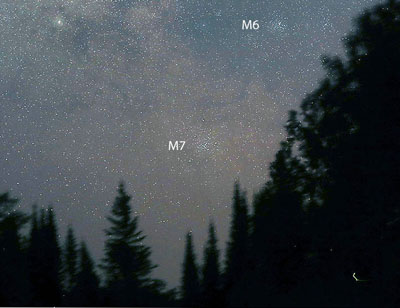
Bob King
When it comes to deep sky, I'll do almost anything. Stand on a teetering ladder, travel 100 miles to dark skies, set up the scope at the edge of a mosquito-infested bog, or sit in the dirt to glimpse an impossibly low planetary nebula. One time I tried to (and succeeded in) observing NGC 3132, the bright "Eight-Burst" planetary nebula in Vela. At declination –40° 26′, it stood just 2.5° above my southern horizon. Atmospheric extinction at that altitude dimmed it nearly four magnitudes, from 10 to 14. Sure, it was faint, but I could clearly make out its shape in my 11-inch scope.
Are you a bottom-feeder, too? Some of the best deep-sky objects lurk in the bellies of constellations that scud across the southern sky. Naturally, we want to observe any object when it's high in the sky and least obscured, but for objects with southerly declinations, that luxury requires travel. Under the right conditions — haze-free skies and good seeing — you can see almost anything your latitude allows.
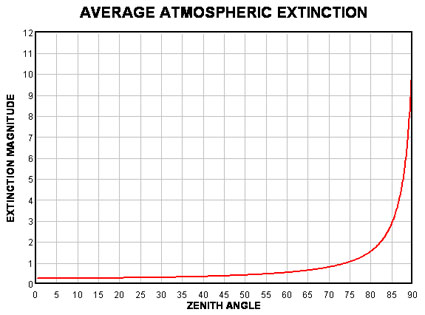
Courtesy of Mike Luciuk and Amateur Astronomers, Inc.
I always check an object's coordinates before making a call on whether it's visible from my 47° north latitude location. Objects with a declination equal to your latitude will pass through the zenith. For me that's +47°. Objects on the celestial equator have a declination of 0° and reach peak altitude when due south on the meridian. My equator stands 43° high at the meridian.
Forty-three degrees below the equator I hit the horizon at declination –43°. Obviously, I can't see anything that far south, but if it's 3°–4° north of that, and I view it near the time of meridian passage, it's worth a try.
Digging down to southern declinations feels a little like doing the limbo. My limbo declination zone spans from about –33° to –40°, where a deep sky object peaks between 10° and 3° altitude. You can determine the declination of your local horizon by subtracting your latitude from 90°. If you live at 30° N, your horizon reaches down to declination –60° (90° minus 30°). If you' live at 42° N latitude, it bottoms out at –48°.
Making a Limbo List
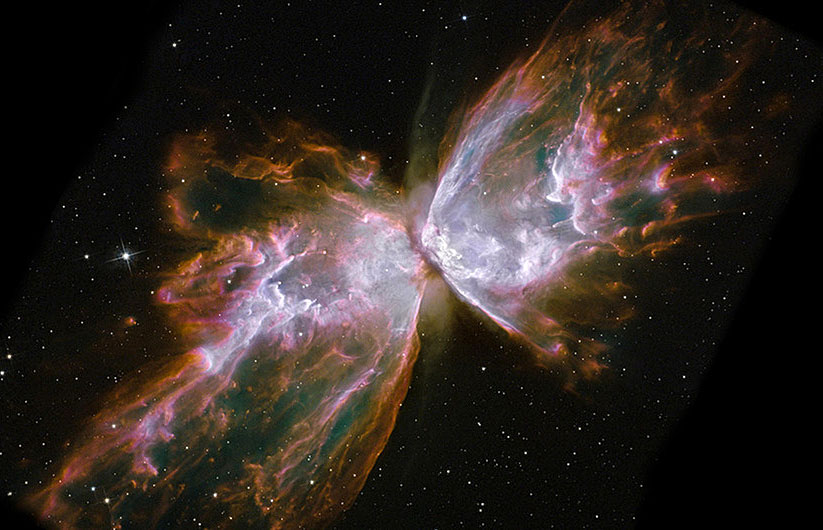
NASA / ESA / Hubble SM4 ERO Team
Once you've determined the lowest declination visible from your location, you'll next need to find a way to plumb it. I keep several observing sites, including one where I can dig down to my southern limit. It's no more than a notch in the tree line but it's my window to wonders if I time things right!
If you have access to a large field or lake, you can probably see within a few degrees of your limit, like I can. If that's not possible, find an opening between trees, mountain peaks, or buildings and stalk it until the appointed meridian passage. Because of extinction (and depending on the size of your binoculars or telescope), select the brightest deep-sky objects and have a look.
Because we don't necessarily share the same latitude, your limbo list will differ from mine. That maxim includes Southern Hemisphere observers hoping to catch sight of northern deep-sky objects like the Andromeda Galaxy or the M81 / M82 galaxy pair.
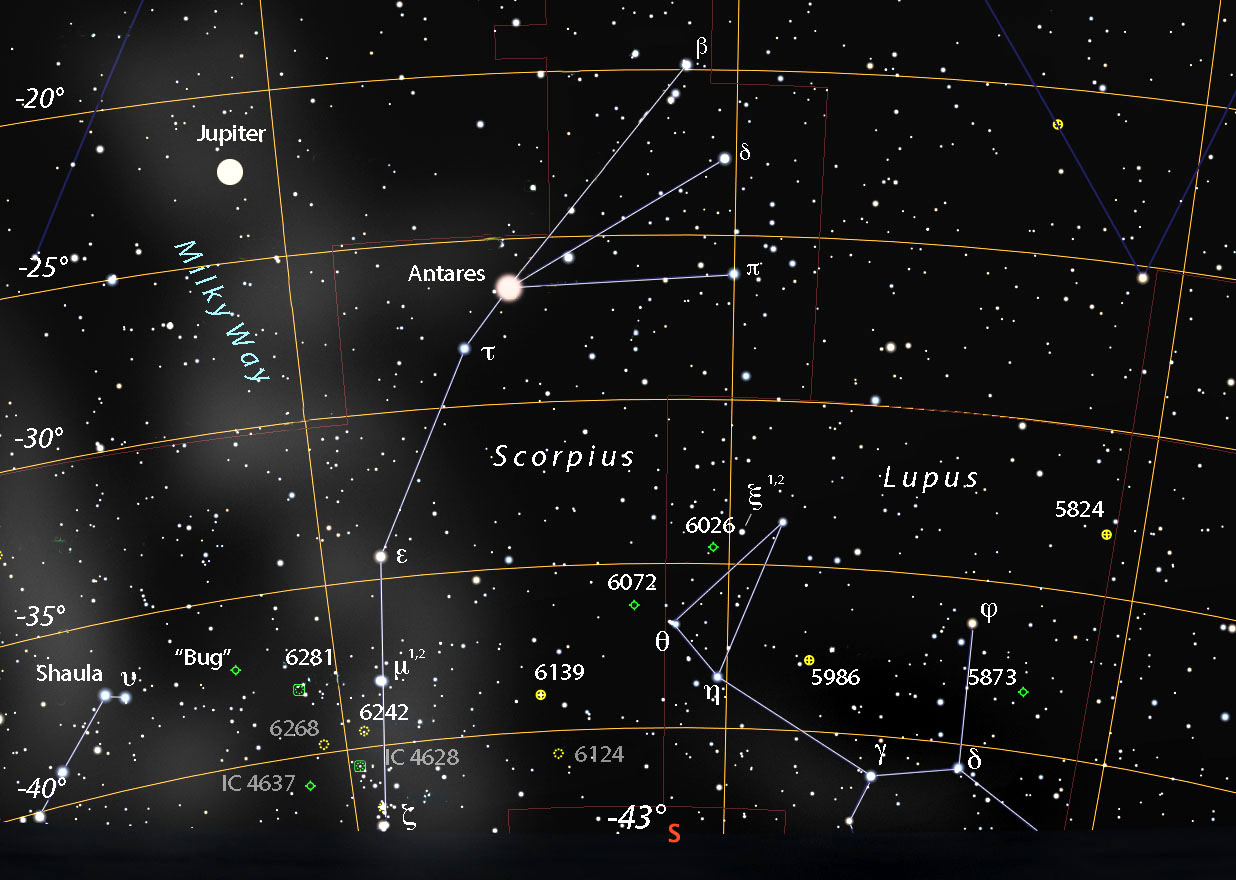
Stellarium with additions by the author
For skywatchers in the Northern Hemisphere, summer is an auspicious time of year for low-hanging goodies thanks to the arrival of Scorpius and Sagittarius, both soaked in Milky Way splendor. I've prepared a list of deep-sky objects and double stars visible from northern Minnesota to help get you started. Many of the targets are magnitude 9.5 or brighter. If you own a refractor or SCT, you might need a step stool to reach these, but Dob owners will undoubtedly find it more comfortable to just sit on the ground. I don't mind being "grounded" while observing cosmic objects. I like the contrast between the gritty Earth and those far-away, cosmic visions pouring through the eyepiece.
Journey to the Bottom of the Sky
We'll start in Lupus, the Wolf, and head east to Scorpius. My observations were made with a 15-inch reflector under Bortle 3 (rural) skies:
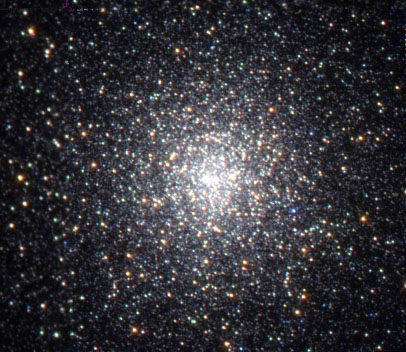
NASA / ESA / Hubble
- Globular cluster NGC 5824 (R.A.15h 4m, Dec. –33° 04′; Magnitude 9.1) — Easily spotted at 64× magnification. About 2′ in diameter with a bright, very compressed core like a faraway version of M15. At 142× the core appears dense and nearly stellar with a sizable halo out to 4′. Faint granulation visible within the inner part of the halo. Very satisfying view!
- Planetary nebula NGC 5873 (R.A.15h12m, Dec. –38° 07′; mag. 11) — Small, fuzzy "star" at 64× expanding to a 15″ misty ball with a bright, starlike center. A UHC nebular filter enhanced its brightness relative to the background sky and made the core positively blaze.
- Globular cluster NGC 5986 (R.A.15h46m, Dec. –37° 47′; mag. 8 ) — Moderately large (5′) cluster with a broadly brighter center. Good resolution of the outer halo at 142× and with averted vision. One standout brighter member punctuates the halo northwest of the core.
- Double star Xi1,2 (ξ1,2) Lup (R.A.15h 56.9m, Dec. –38° 07′; mags. 5, 5.5; sep.10.4″ in P.A. 49°) — Bright, slightly unequal pair really jumps out even in poor, low-altitude seeing. Although they're classed as A and B stars respectively, my eye saw pale yellow.
- Double star Eta (η) Lup (R.A.16h12.1m, Dec. –38° 23.6′, mags. 3.4, 7.8; sep. 20″ in P.A. 20°) — Wonderful contrast to Xi. Bright primary with a tiny 8th-magnitude companion. Reminded me of Rigel.
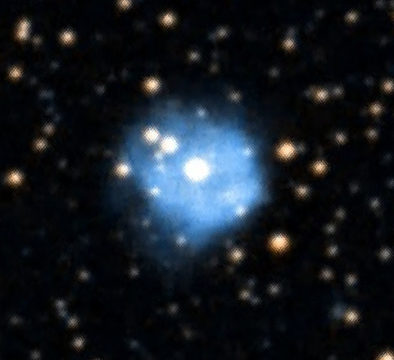
DSS2 / Aladin Lite
- Planetary nebula NGC 6026 (R.A.16h01m, Dec. –34° 32′; mag. 12.9 ) — A faint, arcminute-wide diffuse glow through the O III filter. Easy to spot at 64× and 142×. Bright, 13th-magnitude central star visible at all powers.
- Planetary nebula NGC 6072 (R.A.16h13m, Dec. –36° 13.8′; mag. 14 ) — Nearly impossible to see without a filter. Much improved with the O III! I discerned a 60″ disk with mottling and hints of annularity. No central star visible.
- Globular cluster NGC 6139 (R.A.16h27.7m, Dec. –38° 50.3′; mag. 9.7 ) — Barely seen while sweeping the position at 64×. Upping to 142× revealed a tiny cluster just 1.6′ across with a bright core.
- Open cluster NGC 6242 (16h55.6m, Dec. –39° 28′; mag. 6.4 ) — Located just 1.5° south-southeast of Mu (μ) Sco. Bright, 9′ wide, north-south elongated patch of stars. Although it stands out well, the cluster's on the sparse side with 23 members. Low power is best.
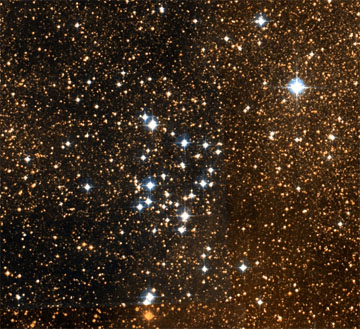
Digital Sky Survey 2 / Aladin Lite
- Open cluster NGC 6281 (R.A.17h04.7m, Dec. –37° 59′; mag. 5.4 ) — Very pretty group elongated north–south and about 8′ across. Nice mix of bright and faint stars with 70 members total. From the southern U.S. this cluster is visible with the naked eye. Gorgeous at low magnification.
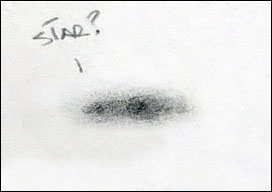
Bob King
- Planetary nebula NGC 6302 (R.A.17h13.7m, Dec. –37° 06′; mag. 9.6 ) —The Bug Nebula was obvious even without a nebular filter. The nebula was elongated east–west with a bright, dense, non-stellar central region flanked by extensions on either side, shorter and fainter to the east. I spied a faint knot (star?) in the west wing. Best views were at 142× with the UHC filter.
If the map above doesn't fit your needs, I've also created versions for 40°N and 30°N latitude — just click the links to get 'em. Or create your own customized map using free plotting software like Cartes du Ciel or Stellarium. Set your latitude, activate the deep-sky object catalogs, and you're ready to go. Happy trails on your southbound (or northbound) journey!
 20
20
Comments
Walter Clayton
June 26, 2019 at 11:50 am
Hey Bob!
I was at 32n (right now I am at 31n, sitting in a sailboat without a working prop, waiting on repairs....but that's another story).
Anyway, I am from Savannah, GA and I use to go out on the pier at the beach and try to catch Archernar at -57s. You can catch it for about 1/2 hour as it glides over the horizon. I also caught it just above the tree line from the causeway to Ft. Pulaski...about 1/2 mile further north, but, with an island between me an the ocean. One other time from Ft Pulaski we THOUGHT we caught Alpha and Beta Centari using the refraction of the atmosphere. It would be about 3 deg below the horizon from there. We DID see some kind of light, and it was a fuzzy light, not, like it was a shrimp boat out in the ocean.
From our dark sky site south of Savannah, we can regularly get a view of Omega Centaurus, the 8-burst, and, other delights. The south is tricky as there is a major paper mill about 10-15 miles south-southwest of the site and the light dome is bad. Otherwise, it's a particularly dark site in the middle of several towns in Georgia.
You still need to come south. Give me enough warning, and, we'll make sure the boat is close enough so I can brake out the dob.
Walter Clayton
s/v Always Home
You must be logged in to post a comment.
Bob KingPost Author
June 27, 2019 at 11:15 am
Hi Walter,
Thank you for the invite! I still haven't seen Omega Cen through anything larger than a 3-inch scope. How I'd love to wallow in all those stars in a hefty Dob.
You must be logged in to post a comment.
Rod
June 26, 2019 at 2:17 pm
"How Low Can You Go?", this is a great report! I live in Maryland near 38.75 degrees north latitude along the Patuxent River and farms. On 14-Jun-18, I briefly observed Omega Centauri globular cluster using 10x50 binoculars, the GC was distinct outline peeking above a distance tree line (I was on an overlook area observing 2100-2200 EDT). Near the latter part of May and early June, NGC 5139 has a limited window to view, typically < 4 degrees above the horizon in south sky near transit at my location. My stargazing log note states: "All along the Patuxent River banks, the chorus of the frogs last night was incredible. June fireflies lit up areas below me as I viewed looking SE and S down the river valley. Big sky view from this location. I did see Menkent star in Centaurus using the binoculars and also Iota Centauri. These were higher elevation and frame Centaurus constellation when searching for Omega Centauri."
You must be logged in to post a comment.
Bob KingPost Author
June 27, 2019 at 11:19 am
Hi Rod,
Thank you! Happy to hear about the summer wildlife — a wonderful aspect of summertime observing. I was out till 2 a.m. the past couple nights, and the piney-balsam fragrance was intense. The fireflies here were also amazing. Based on their flash patterns we have at least four species. Mink frogs, green frogs and eastern toads are also calling right now. The night just sings!
You must be logged in to post a comment.
Anthony Barreiro
June 26, 2019 at 6:45 pm
Thanks Bob. It makes sense that Xi Lupi would look yellow through that much atmosphere. I'm going to try to see it from 38 degrees north during my astronomy club's monthly members night this Saturday and see what it looks like from here.
Zeta Scorpii and the open clusters NGC 6231 and Trumpler 24 combine to form the False Comet asterism which is visible to the unaided eye from a dark location. It looks beautiful through binoculars or a wide-field telescope. It culminates about 10 degrees above the horizon from my 38 degree north latitude, so I can see the asterism in binoculars without getting a crick in my neck. I always spend some time here when Scorpius is culminating, if I've got an open view to the south.
By the way, navigators use the altitude of a culminating star and it's declination to determine the observer's latitude on the surface of the Earth. If the star is on the same side of the equator that you're on, 90 degrees minus the star's altitude plus the object's declination equals your latitude. If the star is on the opposite side of the equator from you, then 90 degrees minus the star's altitude minus the star's declination equals your latitude. This work's for the noon Sun and for stars that are transiting the meridian at night. The Sun's declination changes hour by hour, so you need to find that number in an almanac, but a star's declination changes only very slightly over decades. You wouldn't want to use a star that is very low in the sky because atmospheric refraction would introduce a lot of random error.
A couple of years ago I bought a sextant and I've been practicing celestial navigation, mostly noon Sun sights. It's a lot of fun, but my typical accuracy is only within a few miles of latitude and worse than that for longitude.
You must be logged in to post a comment.
Anthony Barreiro
June 26, 2019 at 6:46 pm
I meant to say Zeta Sco culminates 10 degrees above my horizon. The clusters are north of Zeta.
You must be logged in to post a comment.
Kerbal9
June 27, 2019 at 1:06 am
Hello, Anthony.
No need to change equation, if you take southern latitude and declination with sign 'minus'.
You must be logged in to post a comment.
Anthony Barreiro
June 27, 2019 at 12:34 pm
True, unless you happen to be in the southern hemisphere! 😉
You must be logged in to post a comment.
Kerbal9
June 27, 2019 at 2:19 pm
You're right, it's not so simple. There is difference when declination is greater than latitude, and there is difference when we're south of equator.
You must be logged in to post a comment.
Markhl
June 28, 2019 at 5:04 pm
Good article! From Southern California at 33 to 34 degrees N, I enjoy Canopus and Omega Centauri. I find low southern horizons from Mt. Wilson, from Borrego Springs, and from a notch in the hills near Cottonwood Spring parking area in Joshua Tree National Park.
You must be logged in to post a comment.
kevin-bourque
July 8, 2019 at 11:28 am
I'm in Charleston SC at 32.6N and have a great dark sky spot on the beach. Its part of state park so its unlikely that we'll ever have to worry about lights. I've had some great views of Omega Centauri from there. I'd love to see it high in the sky. Canopus is easy from anywhere with a good horizon. I always point it out to people.
I've only been a little south of the equator (8 S) but I'm convinced that the Southern Hemisphere has better stuff than we do! You can still see the whole Big Dipper from that latitude.
Thanks for an enjoyable article.
You must be logged in to post a comment.
Bob KingPost Author
July 8, 2019 at 1:01 pm
Hi Kevin,
Glad you liked it and thanks for sharing your "southern" perspective with our readers. What the southern hemisphere will always have that has no comparison in the north are the Magellanic Clouds. Someday I hope to explore them in a nice scope. I saw the LMC naked-eye and binoculars (with the Tarantula Nebula) from southern Peru just once back when a friend and I traveled to see Halley's Comet at peak.
You must be logged in to post a comment.
ErnieOstuno
July 10, 2019 at 2:19 pm
I got NGC 5843 in Lupus last year from +42 50 N during a rare, clear and low humidity night in July. I'd like to try for some of the Terzan globulars this summer but that means battling not only atmospheric but also galactic absorption/extinction.
You must be logged in to post a comment.
Bob KingPost Author
July 12, 2019 at 12:08 am
Hi Ernie,
Excellent catch on your southern "trolling" expedition. Yeah, those Terzans are really faint. Have you done the Palomar globulars? They're a little easier. Sagittarius has a bright one.
You must be logged in to post a comment.
ErnieOstuno
July 13, 2019 at 10:55 am
According to my observing records, I first observed Palomar 9 (NGC 6717) in Sagittarius back in 1986 from the much better skies of coastal California, along with Terzan 12 (NGC 6256). I have yet to see Palomars 1, 3, 5, 6, 14 and 15. I have seen a dozen of the Andromeda globulars and will try to get a couple of the M33 globulars later this year.
You must be logged in to post a comment.
Bob KingPost Author
July 13, 2019 at 7:20 pm
Ernie,
An ambitious list! (I'm a big fan of ambitious lists) The M33 globulars are demanding. What scope are you using again?
You must be logged in to post a comment.
ErnieOstuno
July 15, 2019 at 2:15 am
A good ole Coulter 13.1" Odyssey which turns 30 years old this year. Have you written about the M33 clusters/nebulae before? I recall seeing an article in Sky and Tel a while ago.
You must be logged in to post a comment.
Bob KingPost Author
July 17, 2019 at 9:39 am
Hi Ernie,
Yes, I wrote about finding NGC 604, a star and M33's brightest globular in this article: https://skyandtelescope.org/observing/triple-treasure-in-triangulums-pinwheel110320150311/
You must be logged in to post a comment.
ErnieOstuno
July 22, 2019 at 4:29 pm
Thanks! Those are the finder charts I was hoping to find...ones that would match up well with what the star patterns would look like through an eyepiece. I will try for C39 the next clear, moonless night. I found the very isolated Andromeda Galaxy globular "MGC1" last year, located in Pisces. Have you seen that one?
You must be logged in to post a comment.
Bob KingPost Author
July 23, 2019 at 12:33 am
Hi Ernie,
No, I haven't seen that one. What is its magnitude and what scope did you use?
You must be logged in to post a comment.
You must be logged in to post a comment.